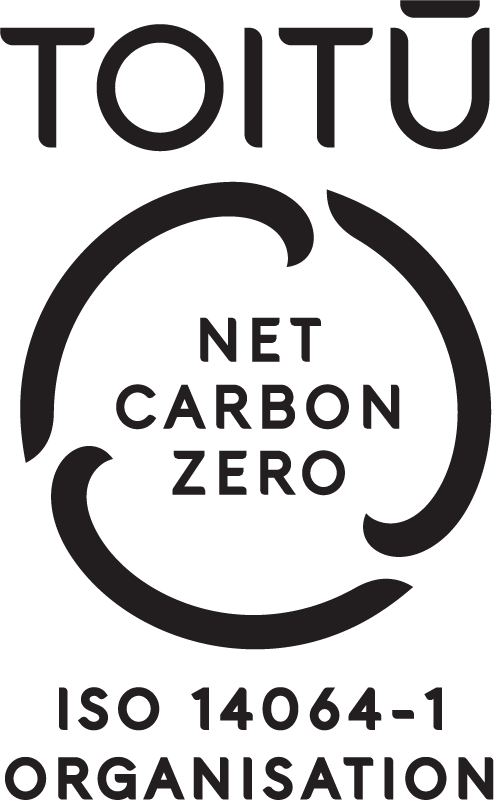
The most important instruction manual you’ve probably never read!
24 March 2023Ask most men if they enjoy reading instruction manuals and you are likely to get a “I don’t think so mate, who needs one of those?” or something along those lines. Why? Well, for me, I’ll have spent a lot of time reviewing, reading, and watching YouTube videos before buying a big ticket item and the last thing I need is an instruction manual to tell me what I already know.
A recent case in point comes to mind. I had decided to go clean and green, purchasing a new electric lawn mower and weedeater for our modestly-sized garden. It came with assembly and ‘how to use’ instructions, but I mean really it’s a mower, and it only needs a few extra bolts and screws to connect a few pieces together, so why would I need to read them?
Well, in hindsight, I probably should have. For one, after 20 minutes I think the neighbours thought I should enrol in a local anger management course, given the time it took me to put the handle on. For another, right at the front of the manual, in the “Very Important Section” in bold letters was a warning not to recharge the battery straight after use as this may damage the battery pack. Turns out they were right.
If you are a KiwiSaver member, or have investments in managed funds, you too would have been given an instruction manual, with the uninspiring title ‘Product Disclosure Statement’. Or, for those in the industry, a PDS. At Mint, the front cover of ours has our company name, the title ‘Product Disclosure Statement’, the funds that we offer and the date that the instruction manual was issued. It also says if it replaces another older version and that the document gives you (the investor), important information to help you decide whether you want to invest in our funds. Pretty simple really.
I bet if I asked 100 people if they had read their PDS before joining KiwiSaver or investing their hard earned money into managed funds the answer would be, at best, ‘not sure’ and, more likely ‘what the hell is a PDS?’
I remember when the new form of offer document was going through its consultation period, I got quite excited, hoping that we could give the old version a new lease of life and have it written in plain English. Something that would actually help investors understand what the funds were, how they worked, the cost, and helping them decide if the fund or funds would help them with their overall financial wellbeing.
This excitement quickly changed when one of the architects at the time told me the front cover of all KiwiSaver PDS’s should come with a warning like “You could lose all your money”. I said sure as long as it also said underneath “and the sun might not come up tomorrow”. Yes, there was a possible risk you could lose all your money, but it would be unlikely over the long term because of the diversification of assets you were investing in. That said if we were hit by a meteorite then all bets are off.
One of the main reasons a PDS seems boring is because it’s a legal offer document and has to say some things in a certain way so there is a level of consistency (which I totally agree with). But reading the shiny new version is just about as exciting as watching paint dry.
So, I thought it would be good to explain a few things for all those who share my feelings about instruction manuals.
Here is a list of the sections you need to read before signing the dotted line. They are really important because, unlike my electric mower, this is your hard earned current or future savings, so the information inside is very important to understand and read before committing your cash.
Section 1: key information summary
- Simply put it tells you the type of investment structure it is and how it works
- It will tell you the number of fund or investment choices you have
- Who is managing your money
- How your investment makes returns for you and/or any income it might provide
- How you can get your money out (or rules when you can) and the things you need to do
- It also tells you how your investment will be taxed
All pretty important stuff.
The next section is the list of investment options on offer
Typically this will have:
- The objective of the fund could be for example to be beat the NZX 50 index after fees for if it was a NZ equity fund being provided by an active manager
- The amount you will be charged, more commonly known as those dreaded fees (most good providers will include GST as well, but some don’t) so something to look out for
- The risk indicator to highlight the risk / return of each fund. A good rule of thumb is the lower the returns supposedly the lower the risk. Vice versa with higher potential returns the risk is deemed higher. It is by no means perfect and does not highlight the long term risk of having lower returns, which could be just as risky for your retirement outcomes because of that nasty thing we all know about now called inflation. But that is another story for another day.
Then there is a contents page followed by more detailed sections of information, which in many cases replicates some of the information you have already read.
These include but are not limited to:
- How the investment works and this covers off:
- The manger and their style; in Mint’s case we describe what an active manager does
- The strategy and approach of how we manage your money
- Our approach to responsible investing - something we are passionate about
- The legal structure of the funds
- And other stuff that talks about income, the minimum amounts you can start investing, how to get your money out and even switching between the funds that are listed in the PDS
- More detail on the actual funds, with graphs or tables to make the information a little more digestible
- A long section that details all the key risks that you need to be aware of when investing your money like:
- Company risk, by that I mean the skill of the manager and their investment team
- Market risk (if you don’t know what that means think about what happened last year where nearly all markets fell in value, which in turn brought your KiwiSaver balance down)
- Currency risk for those investments that are not in New Zealand
- Interest rate risks - something we all know about now
- And any other risks that could impact your hard-earned cash.
The thing is, if you listed everything that could or might go wrong you would never get out of bed to be honest. I’m pretty sure my mower’s instruction manual doesn’t mention a risk while mowing is I could be hit by lightning, for example. The key is being aware of the key ones that will impact your investment choice.
The next section is: What are the fees?
Here, usually, every provider will list the types of fees as a %, which is calculated to the total fund. For example, if the total fee (including gst) is 1% then for a $10,000 investment you will be paying $100 each year for them to manage your money.
Typically there are two main areas of fees:
- The manger fee (in some cases they may charge you not only that fee but a performance fee as well)
- And other costs, which typically include administration fees, supervisor and custodian fees and legal fees
The next sections are:
- The taxes you will pay
- Who is involved. Normally this is who is managing your money, the name of the supervisor, the custodian and the administrator
- How to complain. Just like if you have a complaint against a broadcaster for doing something you don’t like, we have a process for investors as well, which is great. Normally the steps you need to take are:
- Talk to your manager
- If you have no luck, talk to their supervisor
- If you still don’t have any luck with them you can then go to an approved dispute resolution scheme provider
- Where you can find more information relating to your funds, which is the disclose register and site. If you think a PDS is challenging, good luck with that
- And lastly, after all that, if you have not fallen asleep the next step is how to apply for an investment
There normally is a glossary as well for all the jargon that is used, right at the back, but by then I suspect you will have lost the will to live and just leave your money in the bank!
The last section is the actual application from.
Which, in our case, is another 20 pages of information and a range of application forms that are applicable to the different investor types, like single investors, trusts, and companies. Thankfully we like others have simplified this by allowing investors to apply online which is much easier than wading through pages of forms.
That’s about it. To be honest after reading this article I am not sure if I have really simplified anything and it just highlights there is plenty to think about. I guess the most important things are:
- Do you understand how your money will be invested?
- What are the costs?
- What are the risks and likely returns over time?
- And will the investment help you with your specific purpose or goal?
Going back to my electric mower, if I had just taken a little time to read the instruction manual I would not have scared the neighbours’ kids and most likely have a far more effective battery pack than I have now. The same applies to your money: if you don’t understand how it works and it sounds too complicated get some professional advice to help you work out what is right for you.
Disclaimer: David Boyle is Head of Sales and Marketing at Mint Asset Management Limited. The above article is intended to provide information and does not purport to give investment advice.
Mint Asset Management is the issuer of the Mint Asset Management Funds. Download a copy of the product disclosure statement here.


